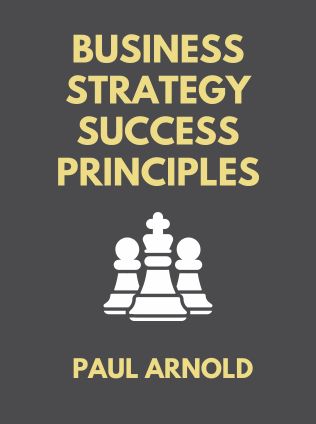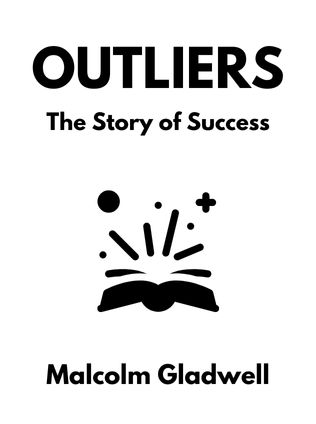
Business Strategy Success Principles
An Action Plan to Grow Your Business and Enjoy an Easier Life
By Paul Arnold
Published 07/2022
About the Author
Paul Arnold is a successful entrepreneur and networking business owner who has dedicated his career to helping other business owners achieve their goals. With a wealth of experience in the business world, Arnold has developed a series of principles and strategies that he has used to grow his own businesses and which he now shares in his book "Business Strategy Success Principles: An Action Plan to Grow Your Business and Enjoy an Easier Life". Arnold’s approach emphasizes working smarter, not harder, and he aims to help entrepreneurs free up their time while increasing their business revenue.
Main Idea
The central theme of Arnold’s book is that by focusing on what is truly important, entrepreneurs can plan, improve, and grow a successful business faster. Arnold introduces twenty essential principles that guide business owners through various stages of their business journey, from initial planning to advanced strategies for established businesses. By following these principles, entrepreneurs can achieve a more efficient, strategic, and enjoyable business life.
Table of Contents
- Your Plan
- Should I? Do You Have A Solid Business?
- Why Do This? Plan Your Destination
- Who? Know Who You Want
- What If? Know Your Business
- Be Smart And Scale Plan Your Business
- How Much? Know Your Numbers
- Your Brand
- Who Are You? Your Brand Is Everything
- Where Are You Online? Improve Your Brand
- Your Purpose
- Your Why What Is Your Purpose?
- Your Vision Creating Your Vision Board For Your Personal “Why”
- Your Communication
- Know Your Customer Strategic Sales
- What Do You Do And Why Should I Care? Build Relationships
- Your People
- Dream Team Build Your Team
- Right Surroundings Improve Your Network
- Your Pivot
- Change Direction Six Steps To Pivot And Remain Profitable
- Your Strategy
- Get Rich Make More Money
- Take It To The Next Level Raise The Bar
- Zen Business Keep It Simple
- Agree To Succeed Say “Yes” To Opportunity
- Live The Dream Have Fun
Your Plan
Should I? Do You Have A Solid Business?
Arnold begins by addressing the foundational aspects of starting a business. Understanding why businesses fail is crucial to avoiding common pitfalls such as lack of market need, insufficient capital, improper team composition, competition, and pricing issues. These insights lay the groundwork for building a robust business plan.
“Understanding the top reasons businesses fail can help you learn valuable lessons to position you and your business for a greater likelihood of success.” - Paul Arnold
The initial stage involves evaluating the business idea’s feasibility. Entrepreneurs need to critically assess whether there is a real need for their product or service in the market. It's essential to ensure that sufficient capital is available to sustain the business through its initial phases, and that the team comprises individuals with the necessary skills and expertise to drive the business forward.
Arnold emphasizes the importance of thorough market research and competitive analysis. Understanding the competitive landscape helps in positioning the business effectively and setting competitive pricing strategies. Avoiding these common pitfalls sets a strong foundation for the business to thrive.
Why Do This? Plan Your Destination
Creating a clear mission and vision statement is essential. These statements define the business goals and the future position of the company, providing a roadmap for success. Regularly revisiting and adapting the business plan ensures alignment with market changes.
“Your business plan helps you stay focused in accordance with your mission.” - Paul Arnold
A mission statement serves as a guiding light for the business, outlining its core purpose and the strategies to achieve its objectives. It articulates what the business stands for and what it aims to accomplish. On the other hand, a vision statement describes the desired future state of the business, providing a long-term perspective on its aspirations.
Arnold advises business owners to periodically review their mission and vision statements to ensure they remain relevant and aligned with the evolving market dynamics. This practice helps in maintaining strategic focus and adapting to new opportunities and challenges.
Who? Know Who You Want
Identifying the ideal client is a critical step. This involves creating a detailed picture of the target market and understanding their needs and preferences. A well-defined business plan should specify where to market the product or service. The more specific and well-researched the target market, the higher the chances of success.
Creating a customer persona helps in understanding the demographic, psychographic, and behavioral characteristics of the ideal client. This information is crucial for tailoring marketing strategies and product offerings to meet the specific needs of the target audience.
What If? Know Your Business
Conducting a SWOT analysis (Strengths, Weaknesses, Opportunities, and Threats) before marketing the business helps in identifying unique selling propositions and areas for improvement. This analysis provides a comprehensive understanding of the internal and external factors that can impact the business.
Sign up for FREE and get access to 1,400+ books summaries.
You May Also Like
The Subtle Art of Not Giving a F*ck
A Counterintuitive Approach to Living a Good Life
By Mark MansonRich Dad Poor Dad
What the Rich Teach Their Kids About Money - That the Poor and Middle Class Do Not!
By Robert T. KiyosakiHow To Win Friends and Influence People
The All-Time Classic Manual Of People Skills
By Dale CarnegieQuiet: The Power of Introverts
The Power of Introverts in a World That Can't Stop Talking
By Susan Cain



















